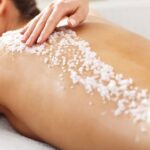Retinoids have become a staple in skincare routines due to their versatility in addressing various skin concerns such as acne, signs of aging, and achieving a radiant complexion. However, there are several misconceptions and potential side effects associated with retinoid usage that beginners should be aware of. Let’s explore and debunk six common myths about retinoids to ensure a safe and effective skincare experience.
1. What Are Retinoids?

Retinoids are a form of vitamin A that has earned a reputation as a “miracle worker” in the beauty industry. They offer a wide range of benefits, including treating acne, fading dark spots and scars, combating signs of aging, and minimizing the appearance of enlarged pores. To achieve desired results, consistency is key; it is recommended to use retinoids for at least 6 months to a year for noticeable improvements.
In many European and American countries, a doctor’s prescription is required to purchase retinoid products. However, in Vietnam, lower-concentration retinoid products are readily available without a prescription.
2. How Many Types of Retinoids Are There?

The two most common forms of retinoids are retinol and tretinoin. Retinol is milder and less irritating to the skin compared to tretinoin, which makes it a popular choice for cosmetic products like serums and moisturizers. When starting out, it is advisable to opt for lower concentrations of retinol to prevent skin irritation and unexpected breakouts.
3. The Benefits of Retinoids

Retinoids work by promoting skin exfoliation, increasing cell turnover, and boosting collagen production. They are particularly effective in fighting acne by reducing inflammation and preventing breakouts.
Additionally, retinoids create a protective barrier for the skin, shielding it from oxidative damage. They also help to minimize the appearance of pores, wrinkles, and fine lines, resulting in a smoother and more radiant complexion.
4. Who Should Use Retinoids?

To achieve optimal results, retinoids are best suited for the following skin types:
– Aging skin
– Acne-prone skin or skin recovering from acne treatment
– Rough, uneven skin texture with enlarged pores
Note: It is not recommended for pregnant women to use retinoid products.
5. Six Common Mistakes to Avoid When Using Retinoids for the First Time
Not Considering Concentration
When incorporating retinoids into your skincare routine for the first time, start with lower concentrations of retinol (0.25% or 0.5%) before progressing to higher concentrations or switching to tretinoin. Jumping straight to higher concentrations can lead to skin irritation.
Forgetting Sunscreen
As retinol increases sun sensitivity, daily sunscreen application is essential. Even if you’re not using retinol, protect your skin from sun damage, premature aging, sunburn, and dark spots by making sunscreen a non-negotiable part of your daily routine.
Applying Retinoids Daily

Whether using low or high concentrations of retinoids, it is best to start by applying them twice a week to allow your skin to adjust. After two weeks, increase the frequency to three times a week, and gradually work your way up to daily use. However, for optimal results, aim for 4-5 times a week.
Insufficient Moisturization
In the initial stages of using retinoids, your skin may experience dryness, flaking, and redness. Enhance your moisturizing routine during this period to counteract these side effects. Ingredients like hyaluronic acid, ceramides, and niacinamide are particularly beneficial for the skin during this adjustment phase.
As retinoids do not play well with water, avoid applying them to damp skin.
Lack of a Structured Skincare Routine

Experienced retinoid users may find that a simple cleansing routine followed by retinoid application on dry skin is sufficient. However, beginners should mix retinoids with their moisturizer to reduce the concentration applied directly to the skin. Use only a pea-sized amount for the entire face.
Lack of Patience
Retinoids require a minimum of 6 months to show noticeable results as the skin goes through a process of shedding and renewal. If you’re not committed to a consistent routine or unable to maintain one, consider exploring alternative skincare methods.
Now you know the six common mistakes to avoid when using retinoids for the first time. We hope this guide helps you navigate your skincare journey safely and effectively. Remember to always consult a dermatologist if you have any concerns or questions about incorporating retinoids into your routine. Stay healthy and happy skincare!






































